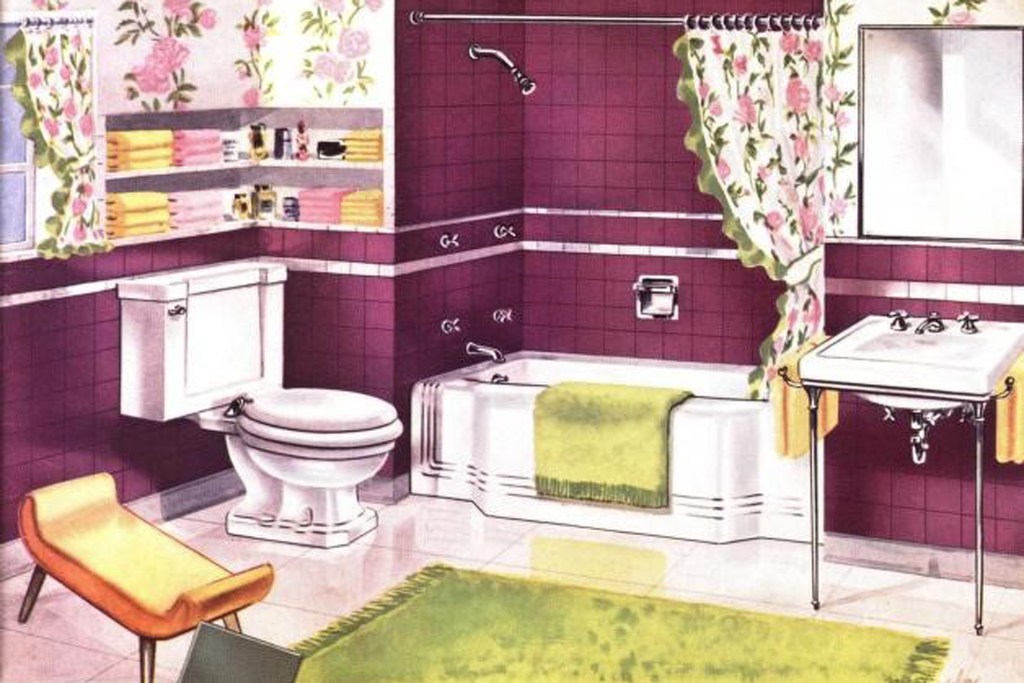This post is part of a monthly series that explores the historical applications of building materials and systems through resources from the Building Technology Heritage Library (BTHL), an online collection of AEC catalogs, brochures, trade publications, and more. The BTHL is a project of the Association for Preservation Technology, an international building preservation organization
Although one can trace the origin of the word “plastic” back to the first moldable materials, the mostly synthetic material has a rich history as a 20th-century building material. The BTHL traces how architects and builders utilized the material for a variety of products, such as the Plastic Relief Manufacturing Co.’s cast fibrous plaster ornaments.
First utilized as electrical insulating materials in the 1890s, laminates were one of the earliest forms of plastics applied to building products. General Electric and Westinghouse drew upon their long manufacturing histories in the material for electrical applications and soon began providing plastic laminates for architectural uses.
By the mid-20th century, the use of vinyl and, specifically PVC, or polyvinyl chloride, in building products skyrocketed as manufacturers coated flooring and wall coverings with the material. Another iteration hit the marketplace when material scientists reinforced plastic with glass-fiber threads, creating fiberglass. Translucent panels also captured the market, finding widespread use in residential and commercial applications. Documents in the BTHL largely end in 1963 before even more plastic products emerged.
Plastic Ornaments Catalog IV, Plastic Relief Mfg. Co., Chicago, 1905
Plastic’s inherent ability to be molded is alluded to in “Plastic Relief,” the name of this manufacturer, which made cast architectural ornaments. Originally, this “fibrous plaster” material was primarily for interior ceilings but had outdoor applications as well.
Micarta: A Decorative Material for Interiors and Exteriors, Westinghouse Electric & Mfg. Co, Trafford, Penn.,1930
Micarta was the Westinghouse brand name for what we now call “plastic laminate,” a combination of synthetic resins and substrates formed under pressure to create a smooth, durable finish material. This product was originally developed as an insulating material for electrical equipment, but evolved into a great variety of architectural products.
Formica: A Modern Plastic, Formica Insulation Co., Cincinnati, 1938
Formica became one of the most popular brands for plastic laminates. The uses shown here are both architectural and in furnishings, but also includes some exterior uses, for which the product did not prove to hold up as well as in interior applications.
Modern Plastics Catalog, Breskin Publishing Co., New York, 1941
The Modern Plastics Catalog is an industry compilation of technical and product data on a wide range of plastic engineering materials, processes, and products. Most of the products illustrated are for nonarchitectural uses.
1 Plastics Avenue, General Electric Co., West Lynn, Mass., 1943
General Electric pioneered the use of plastics electrical insulating products. This catalog features an illustrated history of early developments in plastics.
20 Years of Plastic Surfacing, Roxalin Flexible Finishes, Elizabeth, N.J., 1944
The Roxalin company produced the chemicals that were ultimately used under many different brand names. This catalog features the basic chemical products, the different brands employing them, and their appearance in everything from piano keys to telephones.
Melamine, American Cyanamid Co., New York, 1945
Melamine is the chemical behind the moldable plastic (Melmac) as well as several waterproofing treatments.
Rohm & Haas Plexiglas Acrylic Plastic, Rohm & Haas Co., Philadelphia, 1949
Plexiglas is one of the most well-known plastics with a sweeping range of architectural applications. It often appears in flat and corrugated sheets for a variety of applications for commercial exteriors and interiors.
Plastic Wall Tile by Church, C.F. Church Mfg. Co., Holyoke, Mass., 1950
The use of thin plastic tile in the same dimensions as a standard ceramic tile created a product meant for easy installation in kitchens and bathrooms. Both single color and “marble” patterns were available.
Vinylite CF Materials, Shawinigan Chemicals, Montreal, 1950
The use of vinyl on thin fabric substrates created a colorful and textured wall covering that had excellent durability.
Patterns for Better Living with Textolite, General Electric Co., Schenectady, N.Y., 1953
Textolite was the brand name for a plastic laminate surfacing material produced by GE. This circa 1950 catalog features a great range of patterns that emulate fabrics, stone, and trees.
Flor Ever Vinyl Plastic Floor Covering, Sloane-Delaware, Trenton, N.J., 1954
PVC has a long history of use in flooring as both sheet form and tiles. The colorful catalog from 1954 features several dozen different colors and textures, included a version containing “asbestos,“ which was noted for its moisture-resistant abilities and compatibility with concrete.
Filon, Filon Plastic Corp., Hawthorne, Calif., 1960
Filon-reinforced fiberglass and nylon plastic panes boasted a variety of commercial and residential applications.
